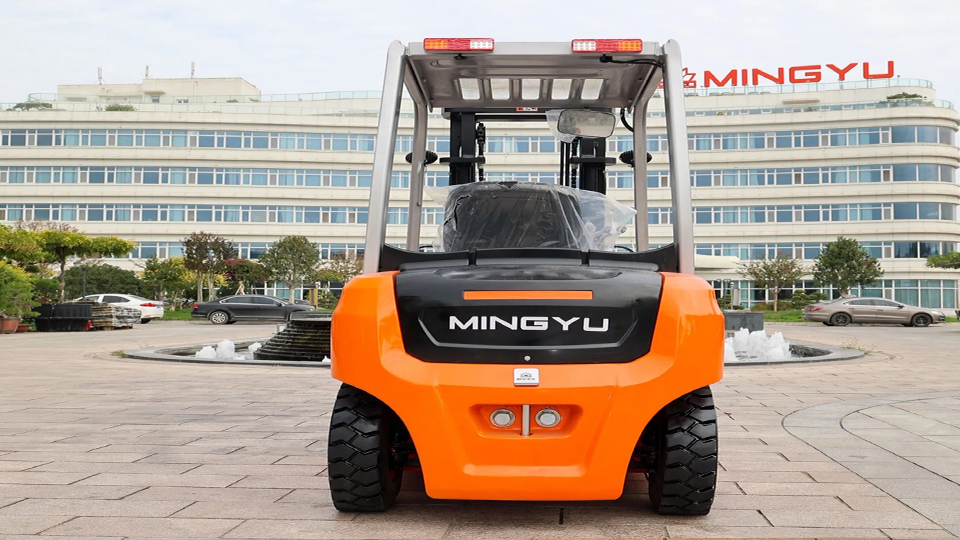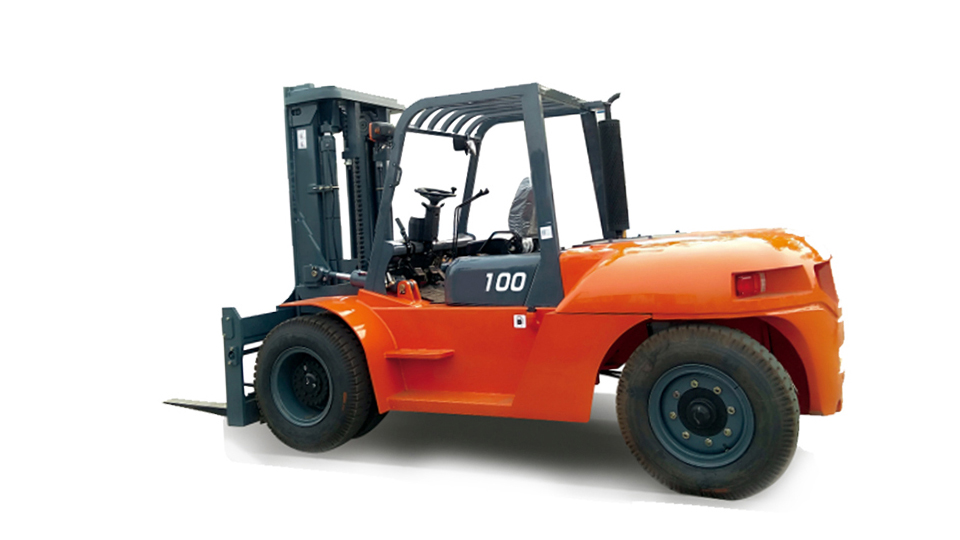
Introduction
The need for a quick solution to a dead battery in an internal combustion (IC) forklift often leads to a common, yet potentially dangerous, question: "Can I jump-start a forklift with a car?" The simple answer is yes, it is often technically possible for IC-powered forklifts, but it is rarely recommended and carries significant electrical, mechanical, and safety risks. This article provides a comprehensive technical analysis of the electrical systems involved, the critical dangers associated with the procedure, and the best practices for safely restoring a forklift's operational power, adhering to modern safety standards and regulatory guidelines.
I. Understanding the Electrical Mismatch: Voltage and Capacity
The feasibility of using a passenger vehicle as a donor source is determined by comparing the two vehicles' electrical specifications: voltage, cold-cranking amps (CCA), and battery capacity.
A. Voltage Compatibility: The Primary Hurdle
The first and most critical consideration is voltage.
Passenger Vehicle (Car/Truck) Standard: Nearly all modern passenger and light commercial vehicles operate on a 12-volt (12V) DC system, powered by a single 12V lead-acid battery.
Internal Combustion (IC) Forklifts: Most propane, gasoline, or diesel-powered forklifts—which are the only types a car could theoretically jump-start—also utilize a 12V DC starting system. This voltage match is the only reason the procedure is technically possible.
Electric Forklifts: Full electric forklifts use massive traction battery packs that typically operate at 24V, 36V, 48V, 72V, or even 80V. Attempting to jump-start an electric forklift with a 12V car battery would be completely ineffective for the traction system and would likely cause severe, potentially irreparable damage to the car's electrical components due to the massive current draw mismatch. The limited scenario discussed in this article is strictly for the IC engine starter battery.

B. Amp Draw and Capacity Mismatch
While the voltage may align, the current (amperage) requirements often do not, creating the core risk to the donor car's electrical system.
Cold Cranking Amps (CCA) and Peak Draw: IC forklifts, especially diesel models, often have larger-displacement, high-compression engines that require a much higher initial current (CCA) to turn over, particularly in cold conditions. A typical passenger car battery and its alternator system are not designed to supply this heavy, instantaneous load.
Deep Discharge State: The dead forklift battery acts as a massive "sink" when cables are connected. A completely dead battery, especially a large industrial one, will try to draw an enormous surge of current from the running car's charging system (alternator).
Alternator Overload: This high demand can exceed the maximum output capacity of the car's alternator, leading to:
Overheating and Failure: Excessive current draw can rapidly burn out the alternator's diodes or windings. Modern, high-output car alternators are particularly susceptible to this type of thermal stress.
Voltage Drop and Spike: As the alternator strains, the system voltage can fluctuate dramatically. When the circuit is broken by removing the cables, a sudden voltage spike can occur, potentially damaging the sensitive Electronic Control Units (ECUs), sensors, and onboard computers common in the donor car.
II. Safety and Regulatory Compliance Hazards
Beyond electrical risks, the act of jump-starting an industrial vehicle introduces severe physical hazards and potential compliance violations.
A. Hydrogen Gas and Explosion Risk (OSHA Consideration)
The most significant immediate risk is explosion. All lead-acid batteries, whether in a car or a forklift, emit a highly flammable and explosive hydrogen gas mixture during charging and heavy discharge, especially if they are heavily discharged (dead).
The Spark Danger: The final connection or the first disconnection of jumper cables will almost always generate a spark. If a cloud of hydrogen gas has accumulated around the dead forklift battery's vents, this spark can ignite the gas, causing the battery casing to rupture or explode, leading to:
Acid Exposure: Spraying corrosive sulfuric acid onto personnel, causing severe chemical burns and permanent blindness.
Shrapnel Injury: The exploding battery case can launch plastic shrapnel.
Safety Precaution (Mitigation): Standard procedure mandates making the final negative cable connection to a bare metal part of the dead vehicle's engine block or chassis—at least 18 inches away from the battery—to ensure any spark occurs away from the hydrogen cloud. However, working on an industrial vehicle with a difficult-to-access battery compartment complicates this safe-grounding procedure.
B. Physical and Mechanical Risks
The relative sizes and designs of a car and a forklift introduce unique mechanical dangers:
Vehicle Contact: Bringing a car close enough to a forklift to attach cables increases the risk of the forklift swinging its counterweight or the car accidentally contacting the heavier industrial machine.
Unfamiliarity with Forklift Components: Unlike a car, a forklift's battery location, terminals, and grounding points may be obscured or non-standard, increasing the chance of reverse polarity connection—a mistake that guarantees severe electrical system damage to both vehicles.
OSHA and Maintenance: OSHA regulations (e.g., 29 CFR 1910.178) do not specifically prohibit jump-starting, but they mandate that powered industrial trucks must be maintained in safe working order. An unauthorized or improper jump-start is often a symptom of neglected maintenance, and any resulting electrical damage could be viewed as a violation of the requirement to maintain safe equipment.
III. Best Practice: A Technical Workflow for Power Restoration
Given the technical and safety risks, the recommended procedure for a dead IC forklift starter battery is to avoid the car-to-forklift jump entirely. The following alternatives are safer, more effective, and compliant with industrial best practices:
A. Priority Solution: Use a Dedicated Jump Pack (Booster Box)
A professional-grade, high-CCA jump pack is the superior choice for several reasons:
Isolation: It isolates the high current draw from the delicate electrical system of a running car.
Controlled Output: Modern jump packs often have internal circuit protection to prevent surges and reverse polarity, greatly reducing the risk of damaging the forklift's components.
Correct Amperage: Industrial jump packs are rated with the high CCA required to turn over a large IC engine.

B. Secondary Solution: Temporary Battery Charger
If time permits, a standard battery charger is the safest method to restore power. The procedure is:
Diagnose: Check the voltage of the dead battery to confirm it's not a more serious issue (e.g., a shorted cell).
Connect: Attach a 12V battery charger to the forklift battery terminals.
Charge: Allow the battery to charge for 30 minutes to an hour to bring the surface voltage up enough to handle the starting load. This gradual process avoids the massive, sudden current surge that damages batteries and alternators.
IV. Conclusion: The Verdict
The question of whether a car can jump-start an IC forklift is a classic technical trap. While the 12V voltage alignment makes it physically possible for the starter circuit, the massive CCA and amperage demand from a cold or deeply discharged forklift battery places the passenger car's alternator and sensitive electronics at extreme risk of failure. Coupled with the inherent hydrogen gas explosion hazard and the need for safe workplace practices, the low-cost car jump is a high-risk gamble.
The technical recommendation is unequivocal: Never use a passenger vehicle as a donor source for jump-starting an industrial forklift. Rely instead on dedicated, engineered industrial booster packs or conventional charging systems to ensure safety, prevent catastrophic equipment damage, and maintain a compliant working environment.
Name: selena
Mobile:+86-13176910558
Tel:+86-0535-2090977
Whatsapp:8613181602336
Email:vip@mingyuforklift.com
Add:Xiaqiu Town, Laizhou, Yantai City, Shandong Province, China